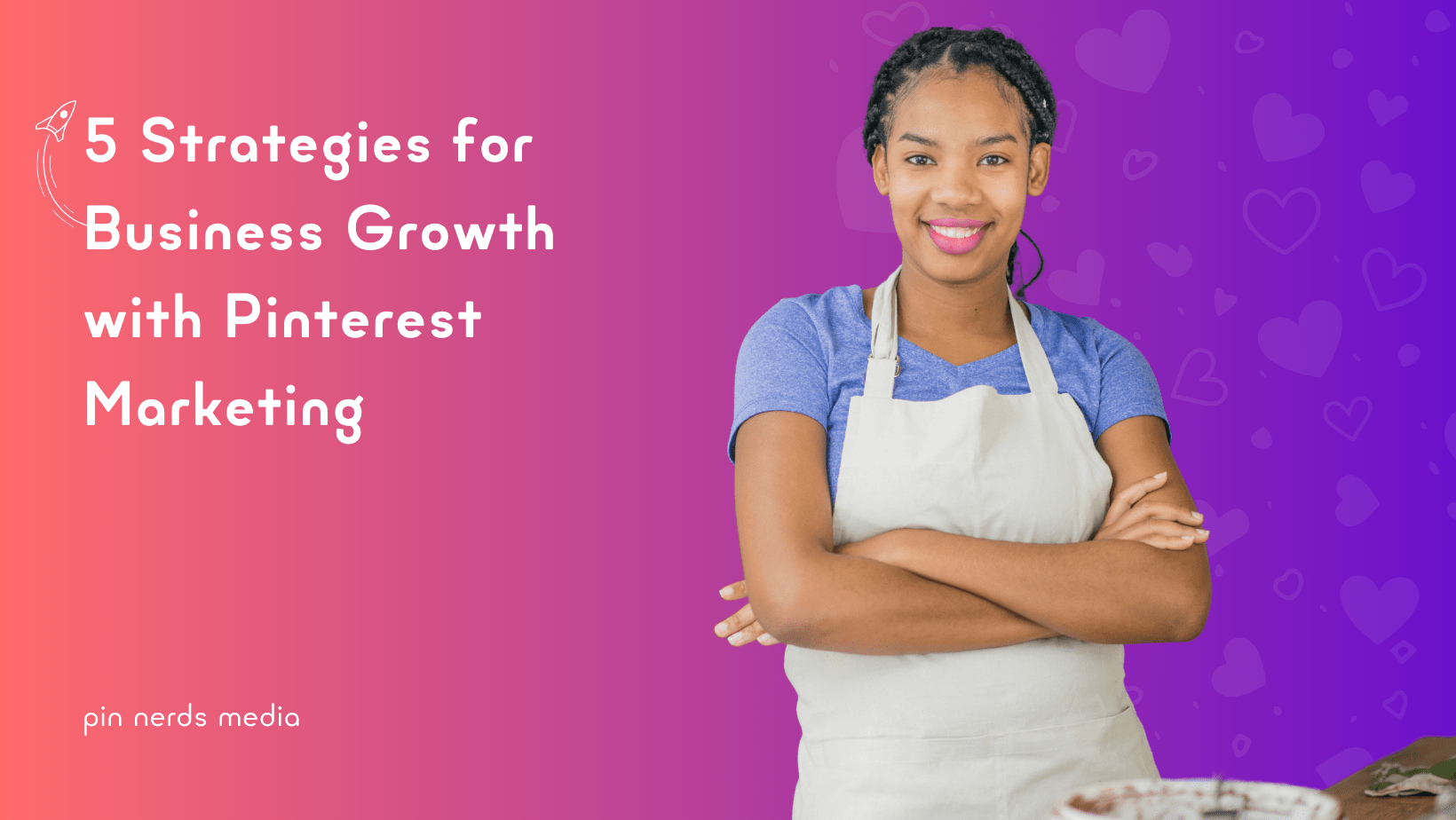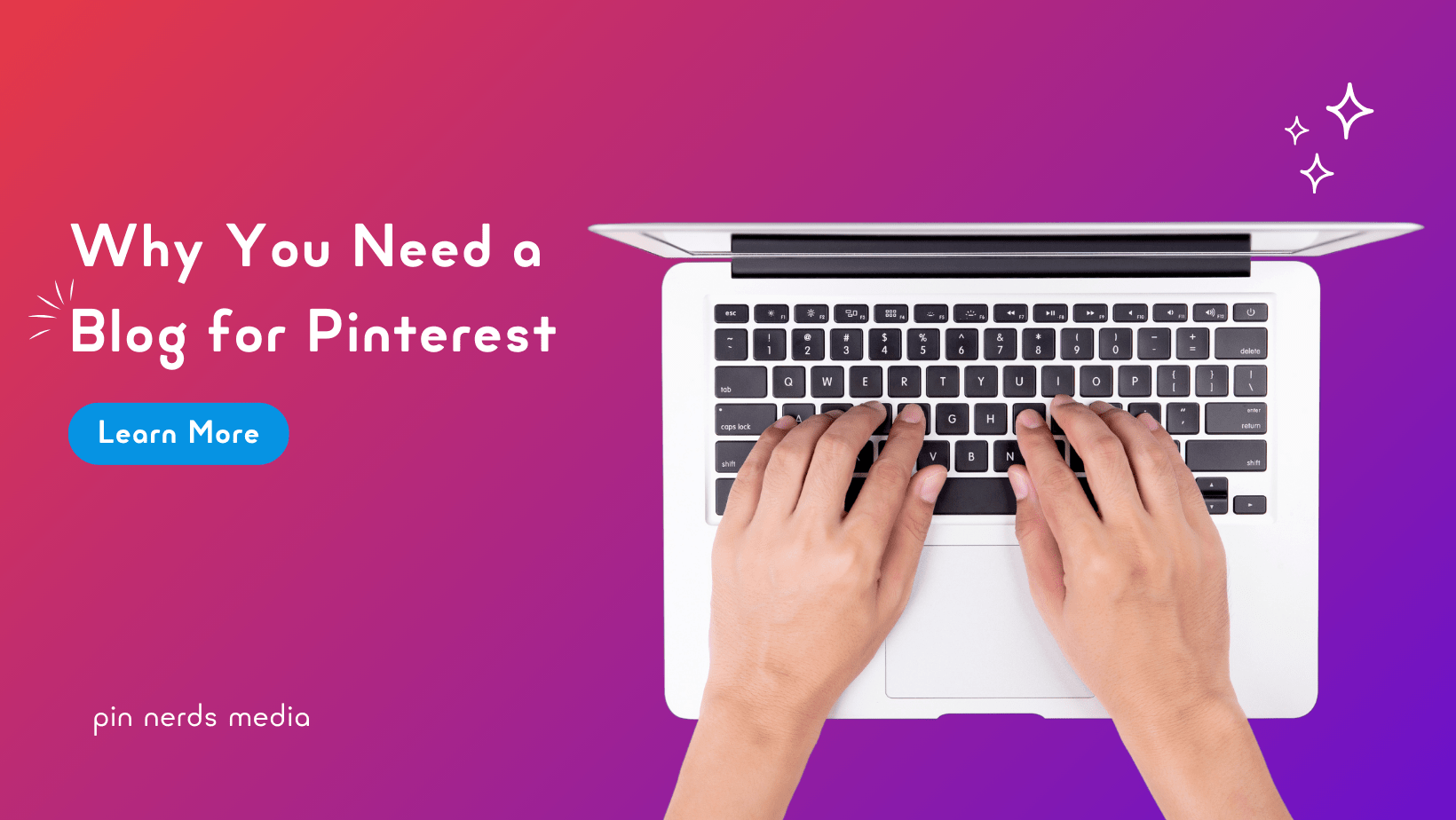This site features affiliate links that may earn us a commission at no extra cost to you if you decide to purchase through them. These commissions help us bring more valuable content to you. For more information, please see our full disclosure for more info.
Pinterest vs. Google – two powerful platforms, but which one is right for your traffic strategy? When I first started looking for ways to drive traffic and sales, I had no idea how game-changing Pinterest would be.
Google was the slow and steady tortoise in our journey to grow our cake business and personal development blog, but Pinterest was the fast mover that gave us quick results.
In just three months, we tripled our page views by combining blog posts with content marketing strategies, and it completely changed everything.
Let me walk you through the key differences between Pinterest and Google, and how you can use these platforms to grow your website traffic.
What’s the Difference Between Pinterest and Google?
At first glance, Pinterest and Google seem like apples and oranges. Google is the search engine giant we all rely on for answers, while Pinterest is often viewed as a social media platform.
But here’s the kicker: Pinterest isn’t social media; it’s a visual search engine. Both platforms serve as powerful tools for discoverability, but they work in distinct ways.
1. Search Engine vs. Visual Search Engine
Google is great at giving text-based results that match your search. It uses algorithms to serve up the most relevant pages based on factors like keyword usage, backlinks, and user behavior.
Pinterest, on the other hand, prioritizes visuals. When users search for something on Pinterest, they’re drawn to eye-catching images-and this is where tools like pin covers and content optimization come into play.
2. Content Lifespan
Google rewards evergreen content, but ranking high can take months. Pinterest is faster: a well-designed pin can start driving traffic within days, and pins have a long shelf life, often resurfacing months or even years after being published.
That’s because of Pinterest’s Smart Feed, which keeps relevant content circulating over time.
For example, evergreen content on Pinterest has been shown to generate significantly higher long-term engagement compared to other platforms like Instagram or TikTok.
3. User Behavior
On Google, users search with intent-they’re looking for specific answers. Pinterest users are in discovery mode. They browse to find inspiration, plan projects, or shop.
This difference is crucial for content creators, as it influences the type of content and keywords you’ll want to use on each platform.
Pinterest’s Lens tool, which facilitates over 600 million visual searches monthly, highlights the platform’s role in shaping user behavior and driving e-commerce sales.
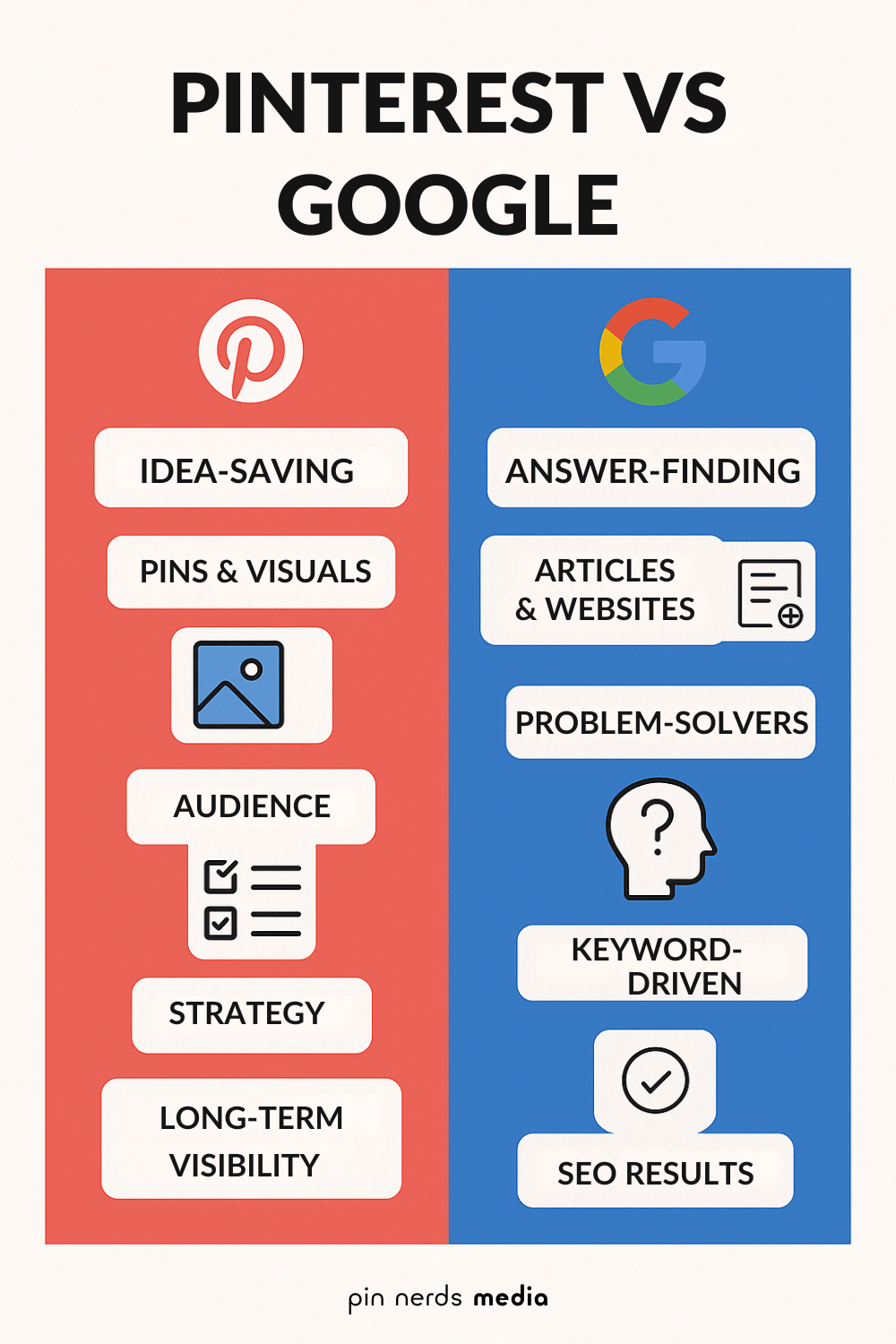
People Are Searching Everywhere (Including Pinterest)
In today’s world, search isn’t confined to just Google anymore. People are using a variety of platforms to get information depending on their needs and preferences.
Whether it’s TikTok for life hacks, YouTube for tutorials, or Amazon for product comparisons, the way we search has fundamentally shifted.
Pinterest plays an important role in this shift, but it’s part of a broader trend called Search Everywhere Optimization, which some refer to as the new SEO or SEO 2.0.
New SEO is about meeting your audience wherever they are searching-on social media, e-commerce sites, or even conversational AI tools. It’s no longer just about ranking on Google; it’s about being discoverable across multiple platforms.
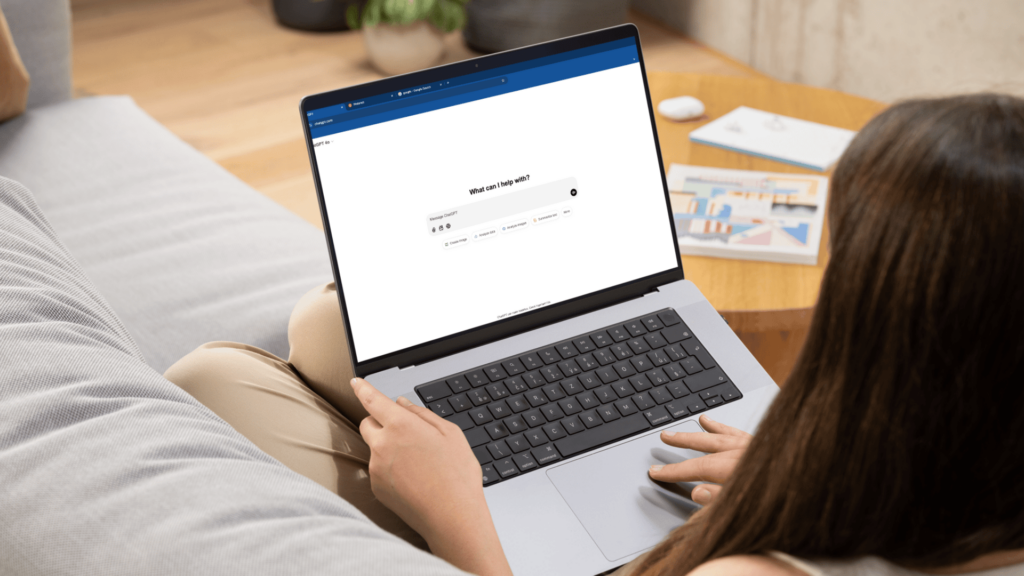
Examples of Modern Search Habits
- People go to TikTok for quick product reviews or tips.
- Shoppers use Amazon to compare products and read reviews.
- YouTube is a go-to for in-depth tutorials or demonstrations.
- Tools like ChatGPT or Google Bard are becoming popular for nuanced answers to complex questions.
By understanding this shift, you can adjust your content to fit the platforms your audience uses.
Adapting to new SEO
Here are some key ways to optimize your content across different platforms:
- Social Media Platforms: Use TikTok, Instagram, and LinkedIn for engaging, short-form content.
- Video Platforms: Create high-quality tutorials and demos on YouTube or Vimeo.
- E-commerce Marketplaces: Optimize your listings on Amazon and Etsy with relevant keywords and descriptions.
- AI Tools: Craft content that aligns with how conversational tools like ChatGPT present information.
- Voice Search: Ensure your content is conversational and optimized for voice searches on platforms like Alexa or Siri.
Why This Matters for Pinterest and Beyond
With users now searching across multiple platforms, new SEO helps your brand stay visible and relevant wherever people are looking for information.
This approach broadens your reach and helps you connect with diverse audiences. Want to learn more about Search Everywhere Optimization? Check out this article from Search Engine Land.
Top 10 Trends: Pinterest vs. Google in 2024
To illustrate the differences, I’ve compiled a chart comparing the top searches on Pinterest and Google for 2024. These lists reveal how each platform’s users behave and what they’re searching for.
| Pinterest Predicts 2024 (Source) | Google’s Year in Search 2024 (Source) |
|---|---|
| 1. Mood board ideas | 1. Taylor Swift concert |
| 2. Sustainable home design | 2. World Cup 2024v |
| 3. Plant-based recipes | 3. AI tools |
| 4. Thrift flipping projects | 4. Election results |
| 5. DIY small spaces | 5. Barbie movie |
| 6. Digital detox tips | 6. Top stocks |
| 7. Home garden trends” | 7. How to make money online |
| 8. Mindful fashion | 8. GPT-4 updates |
| 9. Maximalist home decor | 9. Student loan forgiveness |
| 10. Cozy outdoor spaces | 10. Natural Disasters 2024 |
How These Lists Were Generated
The Pinterest list is a prediction based on emerging trends, while Google’s list reflects historical data of what people actually searched for.
This distinction highlights Pinterest’s ability to act as a crystal ball for content creators. By targeting Pinterest trends, you can create content that aligns with future interests, while Google’s data helps you optimize for proven demand.
Want to learn how to use Pinterest trends for your business? Read our article on how to apply them effectively.
How to Use Pinterest and Google Together
You get the best results when you use both platforms together. Here’s how to make the most of each one:
- Start with Pinterest for Quick Wins: Create visually appealing pins targeting trending topics, and link them to high-quality blog posts. Focus on keywords that match Pinterest’s user intent.
- Optimize for Google’s Long Game: Use the same blog posts and optimize them with SEO best practices keywords, meta descriptions, and backlinks – to improve their ranking over time.
- Design Pin Covers for Discoverability: Eye-catching pin covers with clear text overlays increase the likelihood of clicks. Test different styles to see what resonates with your audience. Pinterest’s shopping ads and taggable products also offer unique opportunities for direct sales.
- Leverage new SEO Principles: Optimize your content for multiple platforms, ensuring maximum visibility. For example, create a TikTok for product demos, a YouTube tutorial, and a Pinterest infographic, all linking back to the same blog post.
- Repurpose Content: Use content marketing strategies to repurpose your blog posts across both platforms. Pinterest’s visuals can drive traffic, while Google rewards in-depth, informative content. To maximize reach, focus on creating evergreen content that remains relevant for months or even years.
Want to know which Pinterest categories resonate most with audiences? Read our breakdown of content strategies based on popular categories to refine your approach.
Traffic Generation and Engagement Patterns
Pinterest’s focus on mobile users (85% of its audience) and its Lens tool’s success in driving 600 million monthly visual searches are crucial for businesses aiming to optimize for mobile.
Meanwhile, Google is key for reaching more people and building organic visibility. Businesses can fine-tune their strategies by analyzing these patterns and creating content optimized for mobile-first audiences.
Final Thoughts on Pinterest vs. Google
Pinterest vs. Google isn’t about choosing one over the other – it’s about understanding their differences and using them together to improve your results.
From my experience, Pinterest was the catalyst that helped our cake business and blog take off, while Google provided steady, long-term growth.
By embracing both platforms and incorporating new SEO strategies, you can use their strengths to bring more visitors and grow your website.
So, what’s your strategy? Are you ready to get started with Pinterest for quick results or improve your content for long-term growth on Google? Start experimenting, and you might be surprised by the results.
If you need help marketing on Pinterest, feel free to fill out our form for Pinterest management to schedule a consultation.
Was this article helpful? Save it now so you can find it easily later! 👇
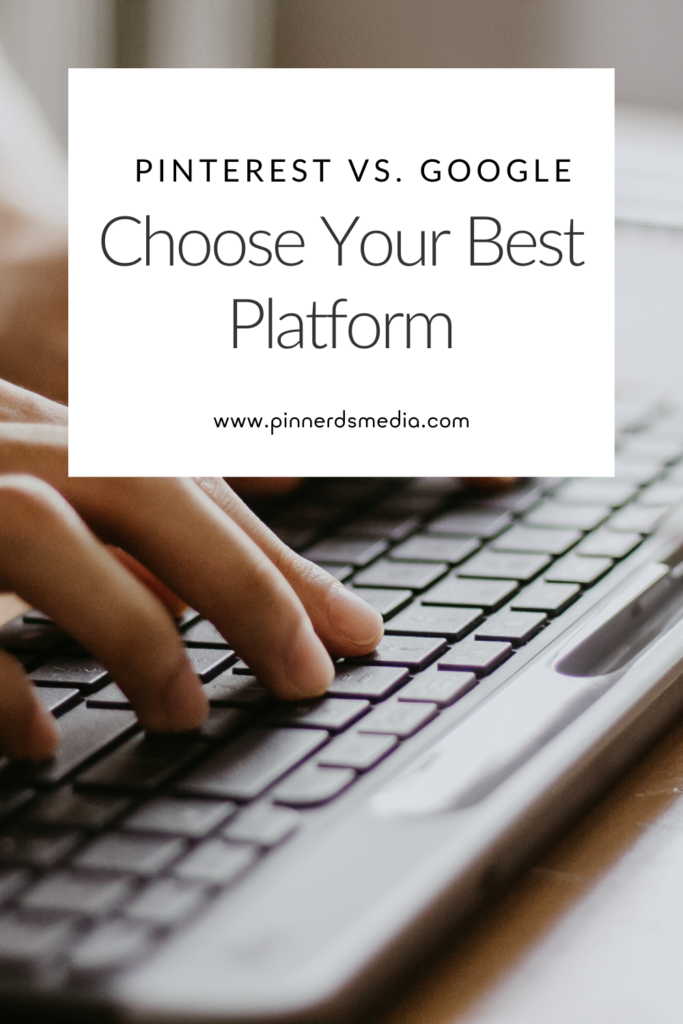
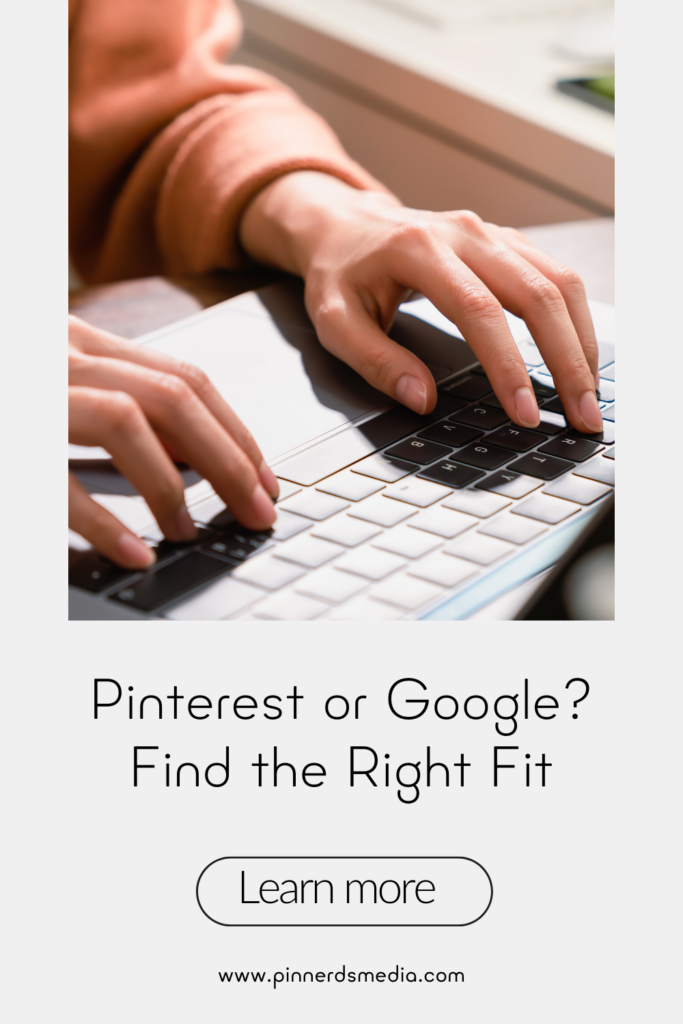

Rodney got into Pinterest marketing to help grow his wife’s cake business. In just three months, his strategies tripled their page views. Now he helps other businesses grow with Pinterest too. When he’s not working, you’ll probably find him enjoying something sweet.

